Solar energy is one of the most promising sources of renewable energy. It's clean, abundant, and can be harnessed through solar panels that convert sunlight into electricity. But how do these solar panels work exactly? And what makes solar panels so effective in generating electrical energy from sunlight? Have you ever wondered about these fascinating questions as you walk down the road, basking in the sunlight? In this article, we will explore the fascinating technology behind solar PV, the historical evolution of solar panels, and their conversion process.
Solar panels are device designed to convert sunlight—composed of particles known as "photons"—into usable electricity. Solar panels are made up of multiple solar cells, which are responsible for the actual conversion of sunlight into electrical energy.
The story of solar energy goes back over a century. Early solar energy applications focused on steam production for driving machinery, but it wasn't until the discovery of the photovoltaic effect by French physicist Edmond Becquerel that converting sunlight into electricity was realized. This discovery led to the invention of the first genuine solar cell by Charles Fritts in 1893, which formed by coating sheets of selenium with a thin layer of gold. And from this humble beginning would arise the device we know today as the solar panel.
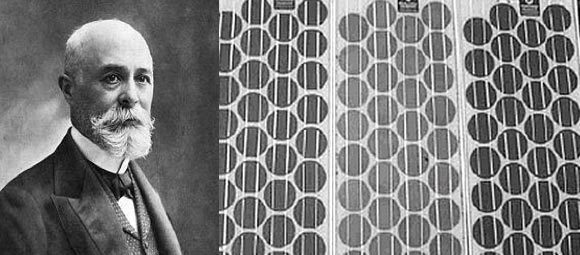
Russel Ohl, an American inventor on the payroll of Bell Laboratories, patented the world's first silicon solar cell in 1941. This innovation eventually led to the production of the first solar panel in 1954 by the same company. These early solar panels were primarily used in space satellites. For most people, the first solar panel in their life was probably embedded in their new calculator - circa the 1970s. Today, solar panels are used to power a wide variety of applications, ranging from small devices like calculators to large-scale electricity grids, playing a crucial role in sustainable energy solutions.

The illustrations for Ohl's groundbreaking invention of silicon-based solar energy cells.
Image credit: Google Patents
How to Make Solar Energy?
The entire process of solar panels converting sunlight into electricity is known as the photovoltaic effect. Solar panels absorb the photons and, in doing so, initiate an electric current. The resulting energy generated from photons striking the surface of the solar panel allows electrons to be knocked out of their atomic orbits and released into the electric field generated by the solar cells, which then pulls these free electrons into a directional current.
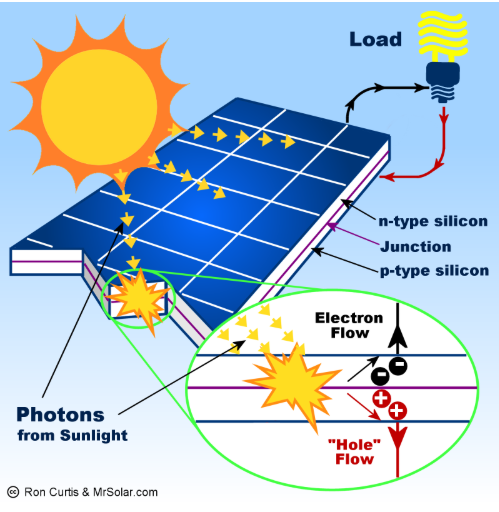
Source: MrSolar.com
In a well-balanced grid-connected configuration, a solar array generates power during the day that is then used in the home at night. Net metering programs allow solar generator owners to get paid if their system produces more power than what is needed in the home. In off-grid solar applications, a battery bank, a charge controller, and, in most cases, an inverter are necessary components. The solar array sends direct current (DC) electricity through the charge controller to the battery bank. The power is then drawn from the battery bank to the inverter, which converts the DC current into alternating current (AC) that can be used for non-DC appliances. Assisted by an inverter, solar panel arrays can be sized to meet the most demanding electrical load requirements. The AC current can be used to power loads in homes or commercial buildings, recreational vehicles and boats, remote cabins, cottages, or homes, remote traffic controls, telecommunications equipment, oil and gas flow monitoring, RTU, SCADA, and much more (MrSolar, 2018).
The differences between solar panels, solar cells, and solar wafers
Solar panels are assemblies of multiple solar cells, encapsulated together, and are responsible for converting sunlight into electricity. High-quality panels are designed with efficient interconnections so that solar cells are connected in a way that minimizes resistive losses while maximizing power generation (ooitech, 2024).
Solar cells are the components that directly convert sunlight into electricity. They are made from solar wafers and are typically encapsulated within a protective layer to ensure longevity. Effective solar cells are capable of converting the maximum amount of sunlight into electricity and must withstand environmental conditions. Over time, the effective solar cells should maintain their efficiency and performance (ooitech, 2024).
Solar wafers are the foundational building blocks of solar cells. These thin slices of silicon are produced by slicing cylindrical silicon ingots, which are made from either monocrystalline or polycrystalline silicon (ooitech, 2024). High-efficiency solar wafers are crucial in ensuring the optimal conversion efficiency of solar cells, thereby significantly enhancing the overall performance and stability of the solar panel systems.
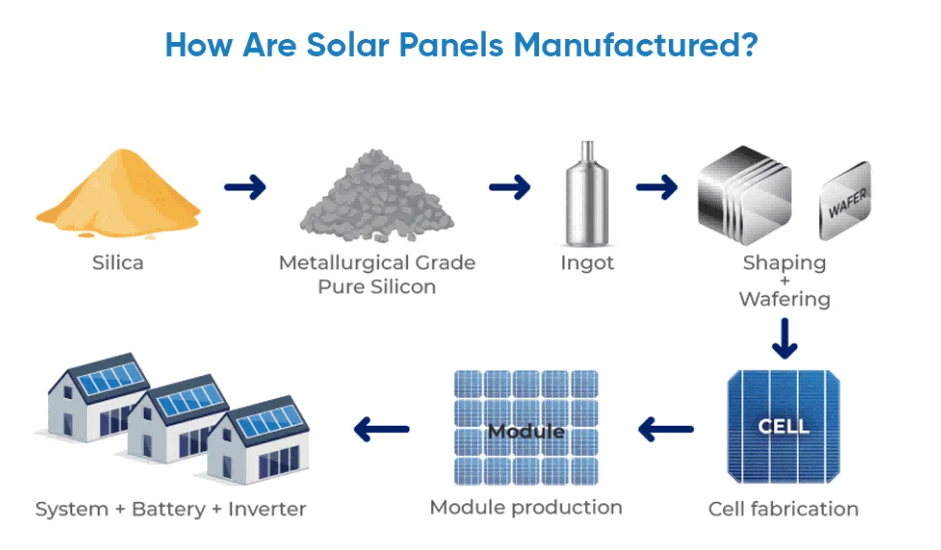
Source: Solar Rescure
Pioneer in China solar monocrystalline field
QJSOLAR began producing solar wafers in 1998 and has since accumulated over 20 years of experience, pioneering several key technologies. As a true pioneer in the China solar monocrystalline field, we focus on delivering high-quality and efficient solar wafers, which play a crucial role in enhancing the performance of solar cells and panels. With a total planned capacity of 20 GW for solar wafers and 40 GW for solar ingots, QJSOLAR is committed to supporting the efficient operation of the entire PV supply chain, contributing to a greener and more sustainable planet.
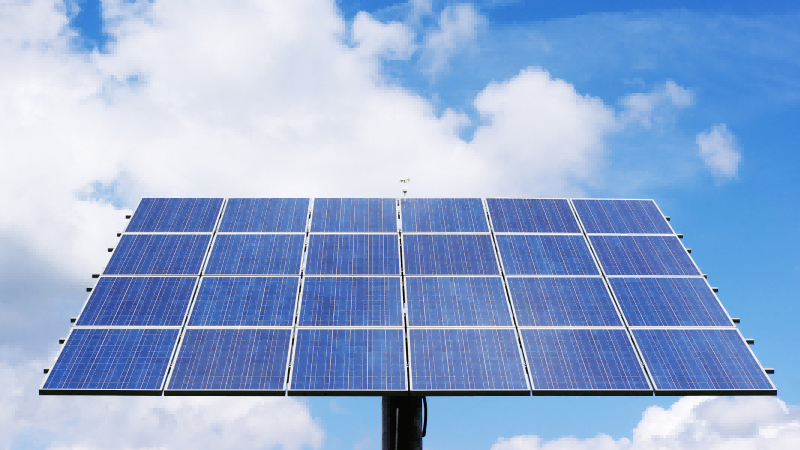
Reference
Charles Fritts. (2020, May 9). Wikipedia. https://en.wikipedia.org/wiki/Charles_Fritts
MrSolar. (2018). What Is A Solar Panel? How does a solar panel work? Mrsolar.com. https://www.mrsolar.com/what-is-a-solar-panel/
Net metering. (2020, November 5). Wikipedia. https://en.wikipedia.org/wiki/Net_metering
ooitech. (2024, September 19). Understanding the Key Components of Photovoltaic Solar Panels: Silicon Wafer, Solar Cells, Modules,. Solarpanelproductionline.com; Solar Panel Production Line. https://www.solarpanelproductionline.com/knowledges/Understanding-the-Key-Components-of-Photovoltaic-Solar-Panels-Silicon-Wafer-Solar-Cells-Modules-and-.html
Russell S. Ohl, Inventor of the Silicon Solar Cell. (n.d.). Monmouth Timeline. https://monmouthtimeline.org/timeline/russell-s-ohl/
Secure, S. (n.d.). Overview of Solar Panel Manufacturing. Www.solar-Secure.com.au. https://www.solar-secure.com.au/blog/overview-of-solar-panel-manufacturing/
Wikipedia Contributors. (2019, February 14). Solar panel. Wikipedia; Wikimedia Foundation. https://en.wikipedia.org/wiki/Solar_panel
Wikipedia Contributors. (2020, February 2). Photon. Wikipedia; Wikimedia Foundation. https://en.wikipedia.org/wiki/Photon
Wikipedia Contributors. (2019, August 22). Photovoltaic effect. Wikipedia; Wikimedia Foundation. https://en.wikipedia.org/wiki/Photovoltaic_effect
Wikipedia Contributors. (2019, May 21). Edmond Becquerel. Wikipedia; Wikimedia Foundation. https://en.wikipedia.org/wiki/Edmond_Becquerel
Wikipedia Contributors. (2019, February 4). Russell Ohl. Wikipedia; Wikimedia Foundation. https://en.wikipedia.org/wiki/Russell_Ohl
Wikipedia Contributors. (2019, January 11). Bell Labs. Wikipedia; Wikimedia Foundation. https://en.wikipedia.org/wiki/Bell_labs
Wikipedia Contributors. (2025, January 17). Solar-powered calculator. Wikipedia; Wikimedia Foundation
Wikipedia Contributors. (2019, March 8). Electric current. Wikipedia; Wikimedia Foundation. https://en.wikipedia.org/wiki/Electric_current
Wikipedia Contributors (2019). Photovoltaic system. Wikipedia. https://en.wikipedia.org/wiki/Photovoltaic_system
Wikipedia Contributors. (2019, September 2). Direct current. Wikipedia; Wikimedia Foundation. https://en.wikipedia.org/wiki/Direct_current
Wikipedia Contributors. (2019, August 18). Alternating current. Wikipedia; Wikimedia Foundation. https://en.wikipedia.org/wiki/Alternating_current
What Is Solar Energy? (n.d.). Www.mrsolar.com. https://www.mrsolar.com/what-is-solar-energy/


 IngotsLearn More
IngotsLearn More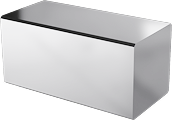




















 Please Click On The Question You Want To Consult
Please Click On The Question You Want To Consult